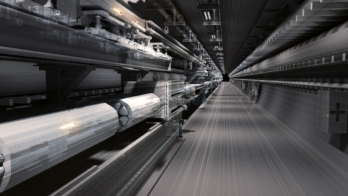As the second update of the European Strategy for Particle Physics gets under way, Tatsuya Nakada reflects on the experience of the previous update in 2013.

Strategy is a base that allows resources to be prioritised in the pursuit of important goals. No strategy would be needed if enough resources were available – we would just do what appears to be necessary.
Elementary particle physics generally requires large and expensive facilities, often on an international scale, which take a long time to develop and are heavy consumers of resources during operations. For this reason, in 2005 the CERN Council initiated a European Strategy for Particle Physics (ESPP), resulting in a document being adopted the following year. The strategy was updated in 2013 and the community is now working towards a second ESPP update (CERN Courier April 2018 p7).
The making of the ESPP has three elements: bottom-up activities driven by the scientific community through document submission and an open symposium (the latter to be held in Spain in May 2019); strategy drafting (to take place in Germany in January 2020) by scientists, who are mostly appointed by CERN member states; and the final discussion and approval by the CERN Council. Therefore, the final product should be an amalgamation of the wishes of the community and the political and financial constraints defined by state authorities. Experience of the previous ESPP update suggests that this is entirely achievable, but not without effort and compromise.
Out of four high-priority items in the current ESPP, which concluded in 2013, three of them are well under way: the full exploitation of the LHC via a luminosity upgrade; R&D and design studies for a future energy-frontier machine at CERN; and establishing a platform at CERN for physicists to develop neutrino detectors for experiments around the world. The remaining item, relating to an initiative of the Japanese particle-physics community to host an international linear collider in Japan, has not made much progress.
In physics, discussions about strategy usually start with a principled statement: “Science should drive the strategy”. This is of course correct, but unfortunately not always sufficient in real life, since physics consideration alone does not provide a practical solution most of the time. In this context, it is worth recalling the discussion about long-baseline neutrino experiments that took place during the previous strategy exercises.
Optimal outcome
At the time of the first ESPP almost 15 years ago, so little was known about the neutrino mass-mixing parameters that several ambitious facilities were discussed so as to cover necessary parameter spaces. Some resources were directed into R&D, but most probably they were too little and not well prioritised. In the meantime, it became clear that a state-of-the-art neutrino beam based on conventional technology would be sufficient to make the next necessary step of measuring the neutrino CP-violation parameter and mass hierarchy. What should be done was therefore clear from a scientific point of view, but there simply were not enough resources in Europe to construct a long-baseline neutrino experiment together with a high performance beam line while fully exploiting the LHC at the same time. The optimal outcome was found by considering global opportunities and this was one of the key ingredients that drove the strategy.

The challenge facing the community now in updating the current ESPP is to steer the field into the mid-2020s and beyond. As such, discussions about the various ideas for the next big machine at CERN will be an important focus, but numerous other projects, including proposals for non-collider experiments, will be jostling for attention. Many brilliant people are working in our field with many excellent ideas, with different strengths and weaknesses. The real issue of the strategy update is how we can optimise the resources using time and location, and possibly synergies with other scientific fields.
The intention of the strategy is to achieve a scientific goal. We may already disagree about what this goal is, since it is people with different visions, tastes and habits who conduct research. But let us at least agree this to be “to understand the most fundamental laws of nature” for now. Also, depending on the time scales, the relative importance of elements in the decision-making might change and factors beyond Europe cannot be neglected. Strategy that cannot be implemented is not useful for anyone and the key is to make a judgement on the balance among many elements. Lastly, we should not forget that the most exciting scenario for the ESPP update will be the appearance of an unexpected result –then there would be a real paradigm shift in particle physics.





